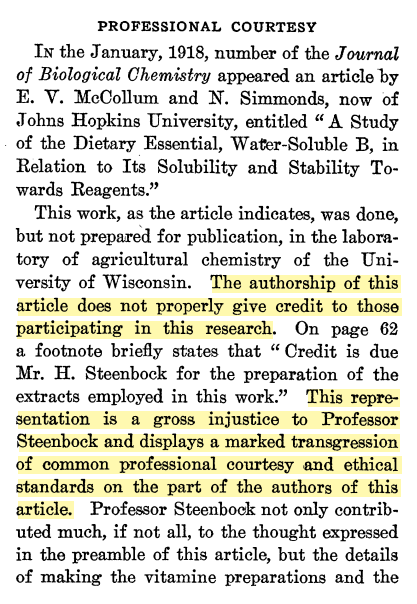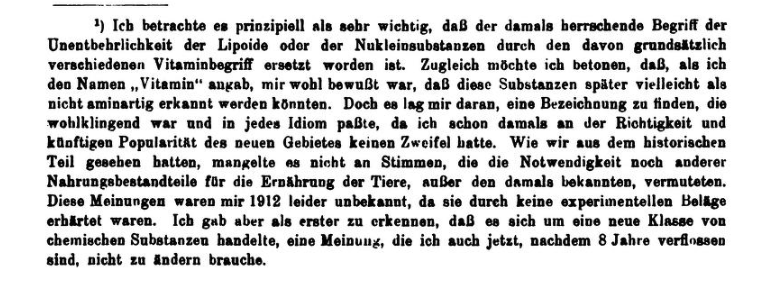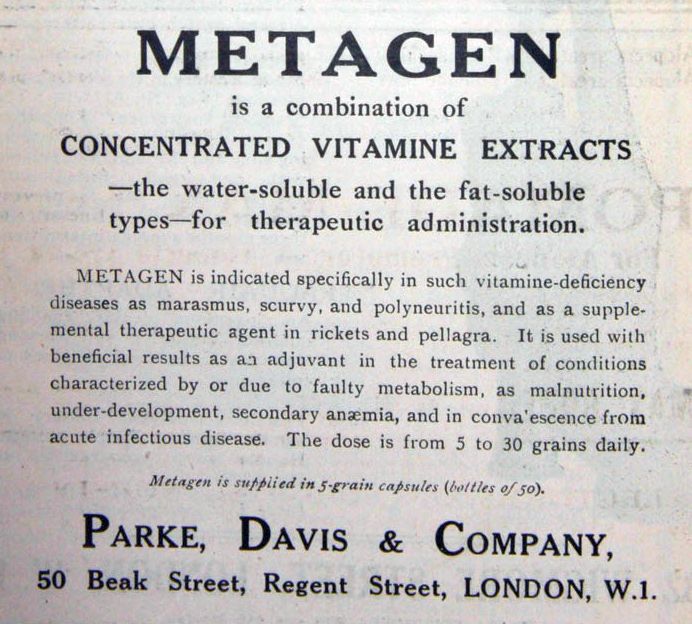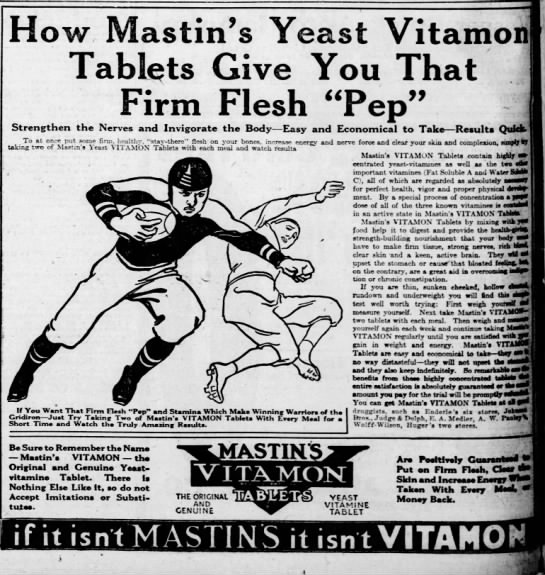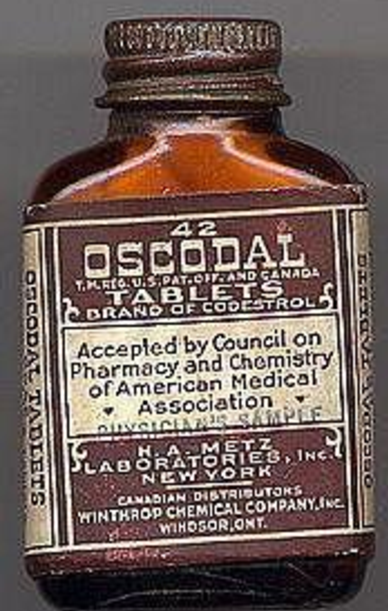What is a Vitamin?

The Discovery
Before we look at vitamin A and vitamin D, it is good to first ask ourselves what exactly a vitamin is. Or rather: what it should be. The term 'vitamin' was coined in 1912 and has been very valuable in the acceptance of a new idea at the time, namely that nutrition is more than just proteins, carbohydrates and fats. It was a Dutchman who provided the proof for this revolutionary idea. Gerrit Grijns showed that the digestion of carbohydrates from rice (the starch from the grain) also required a minute amount of a substance from the hulls. This substance was able to prevent the tropical disease beriberi and was therefore called the anti-beriberi factor. It was the first in a series of “factors” of associated deficiency diseases.
Textbox: the discovery of the vitamin
A short time later it was decided to designate vitamins with letters and to call the substance vitamin B from now on. We now know it as vitamin B1, because it turned out that a whole complex of substances played a role. The numbered B vitamins are mainly cofactors required for all kinds of enzymes. That role explains why so minutely little of a vitamin is needed; After all, the enzymes themselves do not participate in the metabolic reactions. They are not consumed. And the hulls contain so little that hundreds of kilos of it were needed to isolate that one substance, that first discovered vitamin!
It was also in 1912 that Norwegian researchers discovered that the disease scurvy was probably caused by the lack of an anti-scurvy substance. We now know that substance as vitamin C or ascorbic acid. Isn't it remarkable that the first two vitamins discovered do not bear the first letters of the alphabet? That is thanks to the inventor of the vitamin alphabet, Elmer McCollum. He claimed the first letter as his own and also the discovery of vitamin A. The letters B and C were for the already discovered water-soluble vitamins, while vitamin A was fat-soluble. Later he discovered a second “fat-soluble vitamin” and logically that became vitamin D. A hundred years later his behavior still raises questions. The journey of discovery of vitamins was probably less elegant than it is often portrayed.
Powerful Term
In the famous 1912 article, Casimir Funk first coined the term “vitamin”. In the article, Funk discusses the diseases beriberi, scurvy and pellagra. Three common diseases that seemed to be deficiency diseases. There was a lot of searching for the missing substances that would cause the respective diseases. In his article, Funk also mentions rickets as a possible deficiency disease and encourages vitamin experiments to investigate this. He does mention that far too little is known about the enzymes and hormones that most likely arise from vitamins: 6)
I think that experiments with vitamines, which can at least do no harm, ought to be performed here in order to ascertain if a deficiency of the latter is not the real primary cause of the disease.
It is obvious that the minute amount necessary cannot be considered from the point of view of food. It is most probable that they are used as such or transformed into substances which are able to act in small quantities.
When Casimir Funk proposed the term “vitamine” in his scientific paper of 1912, he was looking for a term that sounded good and that would suit everyone. The term may not have been entirely accurate (as no “amines” were found) but it helped in the acceptance of the idea of deficiency diseases. It also helped to create a rapidly growing vitamin industry that was unhindered by regulation. The term seems to have lost none of its power and is inextricably linked to health and vitality.
Textbox: the successful marketing thanks to Casimir Funk
With his term “vitamine”, Funk clearly referred to the micronutrient itself and not to the enzyme or hormones produced by the body for which that vitamin is needed. In 1970, Nobel laureate 9) Paul Greengard defined a vitamin as follows:
A vitamin may be broadly defined as a substance that is essential for the maintenance of normal metabolic functions but is not synthesized in the body and, therefore, must be furnished from an exogenous source. 10)
Textbox: Paul Greengard's statements
With today's knowledge we must conclude that vitamin A and vitamin D are not in line with Funk's intentions, nor do they meet Greengard's definition. They are both substances that are produced by the body itself. For vitamin A, it turned out a few years after its discovery that the substance that does meet the definition is vegetable carotene.
Both retinol (vitamine Aplugin-autotooltip__default plugin-autotooltip_bigThe term “vitamin A” is often used for the group of substances from that metabolism, the vitamin A metabolism. On this website, with vitamin A the substance retinol is always meant.) and cholecalciferol (vitamine Dplugin-autotooltip__default plugin-autotooltip_bigThe term “vitamin D” is often used for the group of substances from that metabolism, the vitamin D metabolism. On this website, with vitamin D the substance cholecalciferol is always meant.) are part of internal regulatory systems. These systems ensure that the body's own production is limited. However, if these substances are added excessively from outside, via the diet or through “supplementation”, then the regulatory systems that limit the body's own production are bypassed and blood values can rise too high.
In addition, the determination of the blood value for vitamin D is based on an incorrect assumption. Rather than measuring the concentration of vitamin D in the blood, a derivative is determined, namely the value of the substance 25-hydroxyvitamin D (25-D). It is assumed that this value is a measure of the actual vitamin D in the blood. A direct clinical vitamin D determination (of colecalciferol) is not available. However, the concentration of 25-D does not have a one-to-one relationship with that of vitamin D. It is therefore not a certain reflection of vitamin D in the blood. Studies have shown that the value of 25-D can be downregulated by disease processes. If this happens, it gives a false impression of a “deficiency”. 11)12)
Vitamin A and vitamin D are both highly toxic. As far back as the 1920s, when the substances were discovered, researchers warned about their deadly dangers in cod liver oil (see box). They always used this oil from fish livers in research into the two fat-soluble vitamins. It was not until around 1930 that it became clear that vegetable carotene was the actual source of vitamin A in the livers. Ergosterol from plants or vegetable oil was thought to be the source for vitamin D.
Standards and Interests
In 1929, Thomas Moore wrote in the leading journal The Lancet that -very likely- carotene from carrots is converted into vitamin A in the laboratory animal. In 1930, Moore followed up with a report in which he confirmed his discovery. 17)18)
Now you might think: great, the real vitamin was found! And using the toxic livers from cadavers was a mistake. Better half-turned than completely gone astray! That's how it seemed to go at first. But what eventually followed was a 180-degree turn.
In 1931, the standards for vitamin A and vitamin D were established. This was important for trade and industry, for example to be able to assess vitamin preparations. The standard for vitamin A was then based on the safe carotene, the plant source. The substance ergosterol was assumed to be the plant form source of vitamin D and chosen as its standard.
This all remained the case until after the Second World War the newly established World Health Organization took over the task of standardization. Since then, the standards have been based on the body's own substances that were known to be toxic. A few years earlier, the issuance of Recommended Dietary Allowances had already begun, in which safe dosages were laid down. A remarkable twist.
Genetic Disruptions
From the 1970s onwards, research into vitamin A and vitamin D took a number of unexpected turns. It turned out that many more substances were involved in these metabolisms; for both vitamin A and vitamin D, a chain of different metabolites appeared to ensure the final effect. Then the signalling effect also came as a surprise: it meant that suddenly there were steroid and retinoid hormones. 24)25)26)27)
But eventually it was discovered that vitamin A and vitamin D both play a crucial role in gene expression, translating our hereditary material into the corresponding proteins. For example, the building blocks for the skeleton, or enzymes, or antibodies. Disrupting that genetic system can have far-reaching consequences. A disruption during embryonic development gives rise to the risk of birth defects. Disruptions during growth and early development pose a risk of abnormalities in, for example, the musculoskeletal system or teeth. Later in life, a disrupted system can lead to all kinds of different chronic diseases and immune dysfunction. More than 500 target genes have been found for vitamin A. For vitamin D there are at least 913, but possibly even thousands of target genes. Both vitamins are inextricably involved in gene expression. 28)29)30)31)
Textbox: the teratogenic effects of vitamin A
At the end of the 20th century, vitamins A and D appeared to work very differently than previously assumed. The puzzle of vitamin A and vitamin D turned out to be much more complex than it had seemed a hundred years earlier.
[PMID: 23798047] [DOI: 10.1024/0300-9831/a000123]
[PMID: 1095967] [DOI: 10.1111/j.1753-4887.1975.tb05095.x]
[PMID: 13199651] [PMCID: 2542188]
[PMID: 31794861] [PMCID: 7987234] [DOI: 10.1016/j.bbalip.2019.158580]
[PMID: 35245207] [PMCID: 9066576] [DOI: 10.1530/EC-21-0594]
[PMID: 18689389] [DOI: 10.1093/ajcn/88.2.491S]
[PMID: 8227879] [DOI: 10.1016/0002-8223(93)91956-q]
